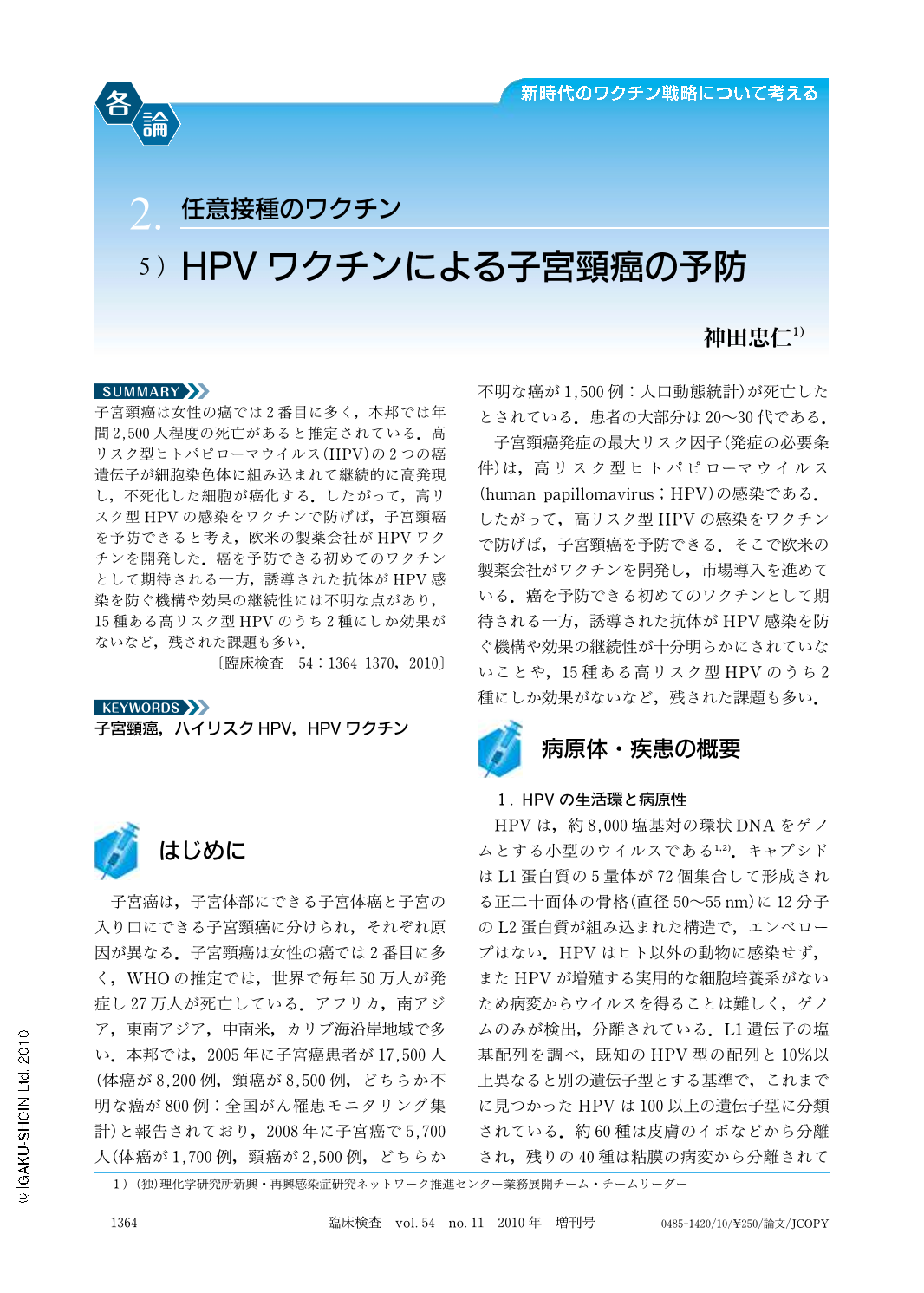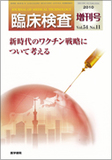Japanese
English
- 有料閲覧
- Abstract 文献概要
- 1ページ目 Look Inside
- 参考文献 Reference
子宮頸癌は女性の癌では2番目に多く,本邦では年間2,500人程度の死亡があると推定されている.高リスク型ヒトパピローマウイルス(HPV)の2つの癌遺伝子が細胞染色体に組み込まれて継続的に高発現し,不死化した細胞が癌化する.したがって,高リスク型HPVの感染をワクチンで防げば,子宮頸癌を予防できると考え,欧米の製薬会社がHPVワクチンを開発した.癌を予防できる初めてのワクチンとして期待される一方,誘導された抗体がHPV感染を防ぐ機構や効果の継続性には不明な点があり,15種ある高リスク型HPVのうち2種にしか効果がないなど,残された課題も多い.
Cervical cancer, the second most frequent gynecological malignancy in the world, is caused by infection with high-risk human papillomaviruses (HPV16, 18, and another 13 types). Vaccines protecting women from infection with high-risk HPVs can reduce the prevalence of cervical cancer. Two vaccines containing HPV16 and 18 virus-like particles (VLPs), which were produced by self-assembly of the major capsid protein L1 of each HPV type, successfully induced type-specific neutralizing antibodies in the recipients of large scale clinical trials and have been approved by several countries. Although HPV16 and HPV18 account for approximately 50% and 20% of cervical cancer, respectively, the remaining major issue to be addressed is how to prevent infection with other high-risk HPVs.

Copyright © 2010, Igaku-Shoin Ltd. All rights reserved.


